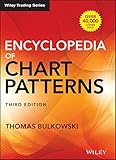
Sentiment: Bullish
Direction: Reversal or Continuation
What Is The Ascending Triangle Chart Pattern?
An Ascending Triangle is a bullish chart pattern, commonly found either at the bottom of a trend as a reversal pattern or mid-trend as a continuation pattern.
It consists of a horizontal upper resitance line and an upward sloping support line.
How To Identify The Ascending Triangle Pattern?
Price action within the developing pattern is confined within two converging trend lines. The upper trend line will stretch across horizontal resistance. The lower trend line slopes upward, supporting price action at increasingly higher troughs. A valid pattern must touch one trend line at least three times and the other at least twice, filling out the triangular pattern (Figure 1).
Volume trends downward during the pattern and an ideal breakout occurs roughly two thirds of the way to the triangle apex (Figure 1).

What Is The Psychology Behind the Ascending Triangle Pattern?
The Ascending Triangle pattern reveals much about the psychological tussle between buyers and sellers. As the price bounces between rising support and horizontal resistance, a story unfolds.
Sellers hold the line at resistance, rejecting each successive rally. Yet their fortitude wanes with each bounce off support. Buying pressure builds steadily, evidenced by the pattern’s rising lower boundary.
The battle enters its final act as the triangle apex nears. Sellers, exhausted and hesitant, meet increasingly zealous buyers. With one last push, the buyers overwhelm resistance, signaling the start of a new uptrend.
The pattern reflects the narrative arc of buyers wresting control from sellers. Demand grows ever stronger while supply dwindles. The stalemate finally breaks as bullish momentum overrides stubborn resistance.
Psychology transforms into price action. The Ascending Triangle’s structure mirrors the tumultuous inner market dynamics that eventually propel prices higher. When resolve turns to resignation, the market speaks through the breakout.
How To Trade The Ascending Triangle Pattern?
The Ascending Triangle pattern offers traders an opportunity to capitalize on bullish momentum. However, executing the trade requires patience and precise timing. As the price presses against the upper boundary of the pattern, traders bide their time, awaiting a decisive break.
When the breakout finally occurs, it must be accompanied by a surge in volume to confirm true buying impetus.
Traders may enter a long position once the price breaks above the resistance level, with a stop loss placed below the trendline support (Figure 2).

Given the prevalence of false breakouts, a prudent strategy may be to wait for a throwback to the breakout level before committing capital. This approach sacrifices some profit potential for a tighter stop loss and improved risk management.
According to Thomas Bulkowski’s Encyclopedia of Chart Patterns, Ascending Triangle breakouts often falter and reverse prematurely. The lower trendline also frequently gives way, only to reverse and take out the upper boundary instead. The same is true in the inverse, where false breakouts fail and bust though the bottom of the pattern.
Traders must therefore exercise caution, utilizing technical indicators and other tools to validate the authenticity of breakouts. The TradingView platform provides access to these resources.
By balancing patience with preparedness, traders can aim to time their entry precisely when the Ascending Triangle finally yields to genuine buying pressure.

Ascending Triangle Performance Expectations Explained
As stated, volume should be growing upon the breakout to confirm the validity of the pattern. A bullish breakout can be expected 63% of the time.
An ideal breakout occurs roughly 64% to the pattern’s apex. Past this point the resulting breakout becomes less reliable, or could be a sign of a different pattern developing.
Throwbacks occur around 64% of the time in upward or downward breakouts. Busted patterns appear around 29% in bull markets, and 46% of the time in bear markets. Therefore, if you see the pattern in a bear market, you might not want to trust it as a reliably bullish pattern.
To find potential targets, measure from the lowest trough to horizontal trend line. Apply the measurement to the point of the breakout (Figure 3). According to Thomas Bulkowski’s Encyclopedia of Chart Patterns price will see the target 70% of the time after breakouts or 44% after breakdowns.



